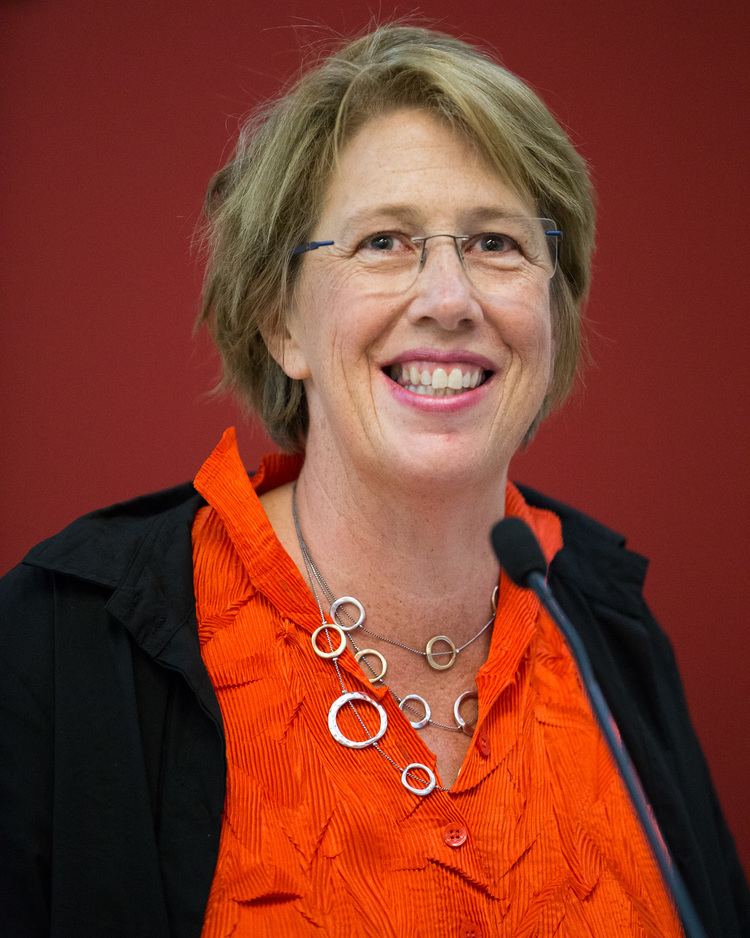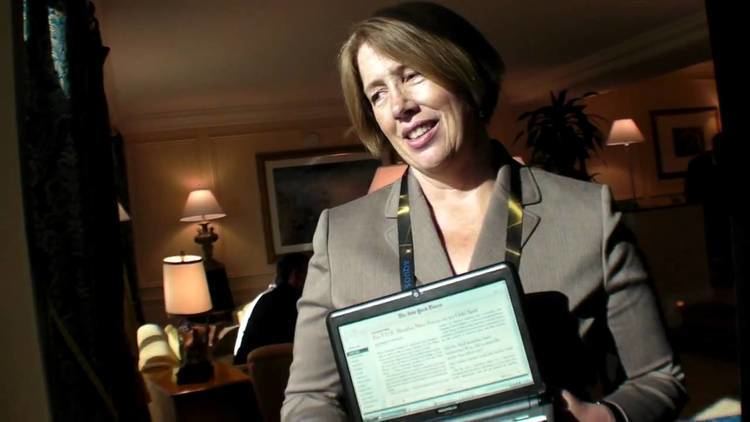Nationality American Name Mary Jepsen Website MaryLouJepsen.com | Occupation Technology Pioneer | |
 | ||
Known for Co-founder, One Laptop Per Child Education Massachusetts Institute of Technology, Brown University | ||
Mary lou jepsen could future devices read images from our brains
Mary Lou Jepsen (born 1965) is a technical executive, inventing and leading groups in the fields of display, imaging and computer hardware.
Contents
- Mary lou jepsen could future devices read images from our brains
- Mary lou jepsen video bio 2011 anita borg institute women of vision award for innovation
- Early life and education
- Intel
- MIT Media Lab
- OLPC
- Pixel Qi
- Solve for X
- Google X
- Awards
- Personal life
- References

Her most recent endeavor is OpenWater, a startup aiming to make fMRI-type imaging inside the body practical at the price level of consumer electronics and in wearable form factors. In 2016, she joined the board of directors of Lear Corporation, a Detroit-area maker of seats and electronics for cars.

She was previously an executive at Facebook / Oculus VR. Among her objectives at Facebook was leading a concerted effort to bring Virtual Reality to the next level. Previously she was Head of the Display Division at Google X where she led more than one "Moon Shot" program, reported to Sergey Brin, and advised and directed display and consumer electronic programs throughout Google. The Wall Street Journal reported that among her projects there she created Google Lego TV: displays composed of smaller screens that plug together like Legos to create vast, seamless images and "live walls" .. in other words from wall size interaction, television, video conferencing and gaming to virtual reality without having to wear anything on your face or body.
She is also founder and former CEO of Pixel Qi in Taipei, Taiwan, focused on innovative opto-electronic architectures and the manufacturer thereof. Pixel Qi delivers high performance, low-power, sunlight-readable screens for mobile devices. The long term vision of Pixel Qi was to create devices that never need be recharged through a two prong approach 1) lowering the power consumption of the device through innovative screen and power management technology and 2) using alternative power generation and battery technologies.
She was the co-founder and the first chief technology officer of One Laptop per Child (OLPC) a non-profit that generated more than $1B in revenue and helped create $30B in revenue for its for-profit partners. There she architected the $100 laptop with new screen architectures, new very low power management architecture, new battery technology, new mesh networking protocol, and new user interface all in record time – and shipped millions of them in an effort to start to transform education opportunities for children in the developing world.
She was named to the "Time 100", an annual list of the 100 most influential people in the world according to Time Magazine. In 2013 she was named one of the CNN 10: a list of top 10 thinkers in science and technology by CNN for her work in rethinking functional brain imaging with higher resolution more compact systems which can ultimately lead to communication directly via human thought.
Mary lou jepsen video bio 2011 anita borg institute women of vision award for innovation
Early life and education
Jepsen studied Studio Art and Electrical Engineering at Brown University. She received a Master of Science in Holography from the MIT Media Lab, and then returned to Brown to receive a Ph.D. in Optical Sciences. Her contributions have had worldwide adoption in head-mounted display, HDTV and projector products. Her PhD work combined rigorous theoretical coupled-wave analysis with lab work, in which she created large-scale, embossed surface-relief diffraction gratings with liquid crystal-filled grooves with high diffraction efficiency in un-polarized illumination.
Jepsen has created some of the largest ambient displays ever. In Cologne, Germany she built a holographic replica of pre-existing buildings in the city's historic district...and created a holographic display encompassing a city block. She co-created the first holographic video system in the world at the MIT Media Lab in 1989, where the interference structure of the hologram was computed at video rates, and shown on her hand-made display. This system inspired a new subfield of holographic video and received numerous awards.
Intel
From 2003 until the end of 2004, she was the chief technology officer of Intel’s Display Division.
MIT Media Lab
In 2005 Jepsen joined the faculty of the MIT Media Lab as a professor with a tenure-track position. Here she started the Nomadic Displays Group. She simultaneously co-founded One Laptop per Child. Then, hooked on the impact that OLPC was having using the massive factory infrastructure of the world, she left Boston to split her time between Silicon Valley and Asia.
OLPC
In January 2005, Jepsen joined Nicholas Negroponte to start One Laptop per Child and led the design, architecture, partnering, development and manufacture of the $100 laptop. As of 2013, millions of units have shipped and revenues are beyond the billion dollar mark. Every child in Uruguay has an OLPC laptop. There are deployments in over 50 other countries and in more than 25 different languages. OLPC is credited with changing the equation for what a minister of education can do to improve the education of a country's children.
For the entire first year of the effort (2005) she was the only employee of One Laptop per Child [OLPC]. By the end of 2005, she had completed the initial architecture, led the development of the first prototype (which UN Secretary General Kofi Annan unveiled at a UN summit), and signed up some of the world's largest manufacturers to produce the XO-1. By the end of 2007 she had led the laptop through development and into high volume mass production.
At OLPC, notably, Jepsen invented the laptop's sunlight-readable display technology and co-invented its ultra-low power management system – and – has transformed these inventions into high volume mass production rapidly. The XO laptop was the lowest-power laptop ever made. The laptop can sustain 5 foot drops, is mesh networked extending the reach of the network by letting signals hop from laptop to laptop.
Pixel Qi
After 3 full years with OLPC, In early 2008 she left OLPC to start a for-profit company, Pixel Qi, to commercialize some of the technologies she invented at OLPC. Pixel Qi's business is based on the concept that the screen is the most critical component of any mobile device. Pixel Qi screens are available in a few dozen products and reduce the power consumption of the screen, which now accounts for about 90% of the power draw in an Apple iPad, and 70% of the power draw on a standard cell phone.
Solve for X
Mary Lou Jepsen was one of the first contributors in Google's "Solve for X" projects with her idea of "Imaging the Mind's Eye".
Google X
Jepsen joined Google X in 2013 as Head of the Display Division.
The Wall Street Journal reported that among her projects there was creating Google Lego TV: displays composed of smaller screens that plug together like Lego to create a seamless image and "live walls" or virtual reality without wearing anything on the face or body.
Re/Code announced in February 2015 that Jepsen was joining Facebook as an executive for virtual reality.
Awards
Jepsen has won awards including:
She has also received numerous awards for the work she did at One Laptop per Child, and has been named to many other "top" lists in computing by Fast Company, New York Times, IEEE Spectrum and others. She is the "foursquare" mayor of Carnegie's Restaurant and Bar in Taipei, Taiwan. Quoted as saying "I honestly come here just for the food".
Personal life
Jepsen is married to John Patrick Conor Ryan, formerly a partner at Monitor Group. In 1995, she suffered from a pituitary gland tumor and had it removed and thus suffers from panhypopituitarism, requiring a twice-daily regimen of hormone replacement.; her personal description of this and the ongoing challenges she faces was published in the New York Times.
